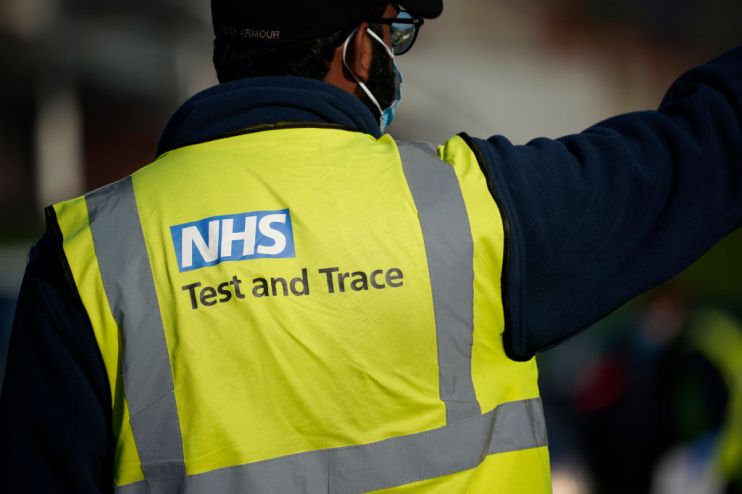Exclusive: Test and Trace slammed for tweaking counting method to boost stats

The Government’s Covid-19 Test and Trace programme has come under sharp criticism for tweaking its method of counting coronavirus contacts to boost figures.
The beleaguered contact tracing system last week changed its methodology so that Covid-19 contacts can be counted multiple times, City A.M. can reveal.
Previously, people who had been in contact with any number of positive Covid cases would be counted as one contact under the Test and Trace scheme.
However, individuals are now counted for every Covid case they encounter.
It means, for example, that an individual who came into contact with four people in a GP waiting room who later tested positive for coronavirus would be counted as an “identified contact” by Test and Trace four times.
A spokesperson for the Department for Health and Social Care admitted that the change would result in duplicate figures, but declined to clarify how many.
The changes came as Test and Trace last week boasted that a “record” proportion of Covid contacts were asked to self-isolate.
Between 7 and 13 January, the scheme identified 613,524 people as recent close contacts of Covid infections. The figure marked a 20 per cent drop on the previous week, however Test and Trace said it had increased the proportion of those contacts asked to self-isolate to 92.9 per cent.
Double and triple counting
Justin Madders, shadow health minister, told City A.M: “Boasting of record numbers of contacts when it is just the old trick of double and triple counting doesn’t make anyone any safer and doesn’t show that we finally have the ‘world-beating’ system the Prime Minister originally promised.
“The reality is these changes may make it look like the system is performing much better but not a single extra person will have been identified as a result of them. If the government had fixed Test and Trace when the sun was shining then perhaps we might not be in the dire position we find ourselves in now.”
Test and Trace has repeatedly changed its counting methodology since the government’s Scientific Advisory Group for Emergencies (Sage) last year stated the scheme needed to reach at least 80 per cent of Covid contacts to be deemed effective.
The programme hit the target last month for the first time since May, after reaching 85.7 per cent of close Covid contacts for the week ending 2 December.
However, the biggest driver for the milestone was a key decision to make a single phone call to households that have been in contact with a positive coronavirus case, rather than calling each individual household member.
Big budget, bigger problems
The Test and Trace scheme, which has so far cost the UK taxpayer more than £22bn, has faced mounting criticism for repeatedly failing to meet targets.
The £22bn figure dwarfs the £2.7bn that the government has so far allocated for coronavirus vaccines.
Analysis by City A.M. earlier this month showed Test and Trace failed to reach more than 30,000 people who tested positive for coronavirus in the week before Christmas, at the same time the government warned that a new coronavirus mutation was spreading across the country.
Test and Trace interim chief Baroness Dido Harding last week defended spending almost £1m a day on private consultants for the scheme, after it emerged Deloitte workers were being paid £1,000 for each day of work on the programme.
Read more: Exclusive: Government scraps ‘game-changing’ antibody tests at NHS sites
During a grilling from the Public Accounts Committee, Harding told MPs she felt it was “appropriate” to bring in external help in “extreme emergency circumstances using short-term contingent labour and consultants for some of those roles”.
“I think they’ve done very important work alongside the public servants, the military, the healthcare professionals and members of the private sector who have come and joined us as well,” she added.